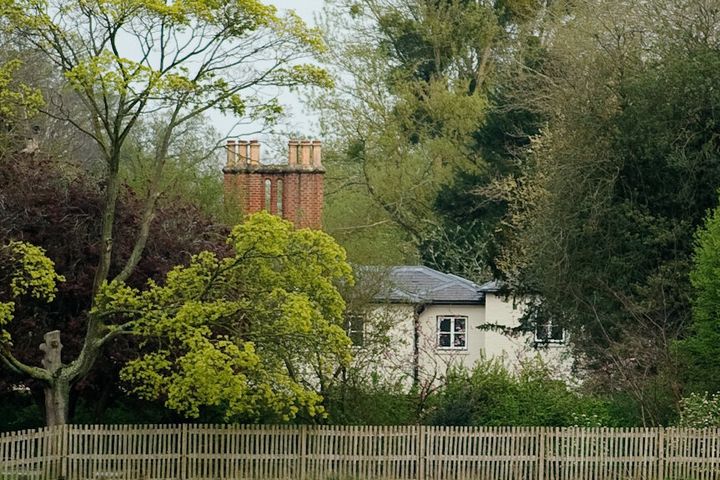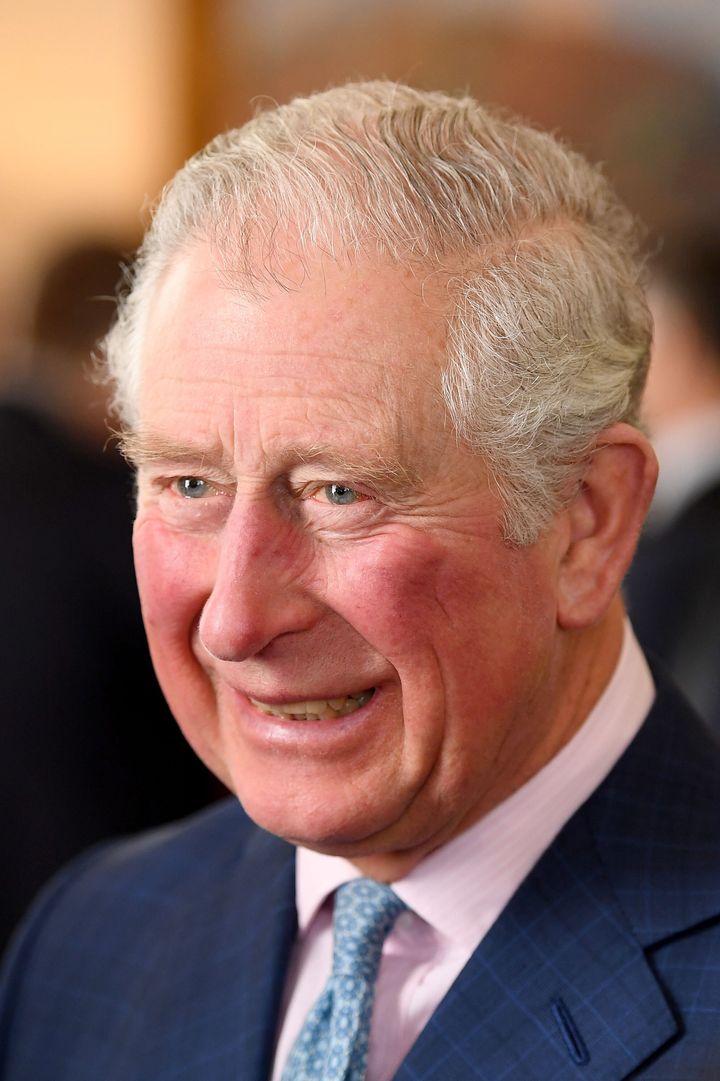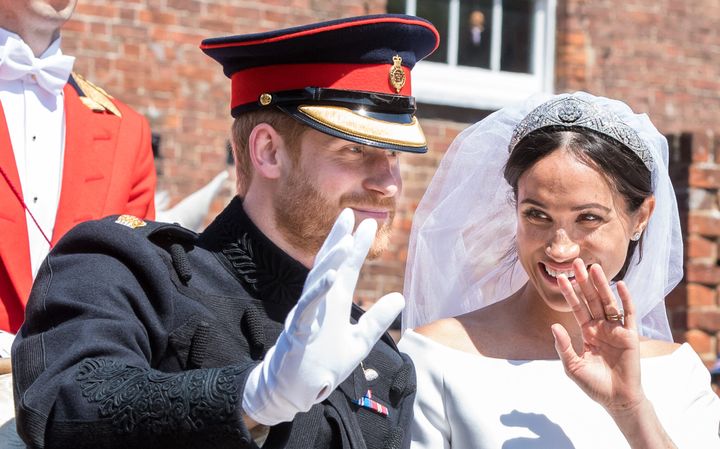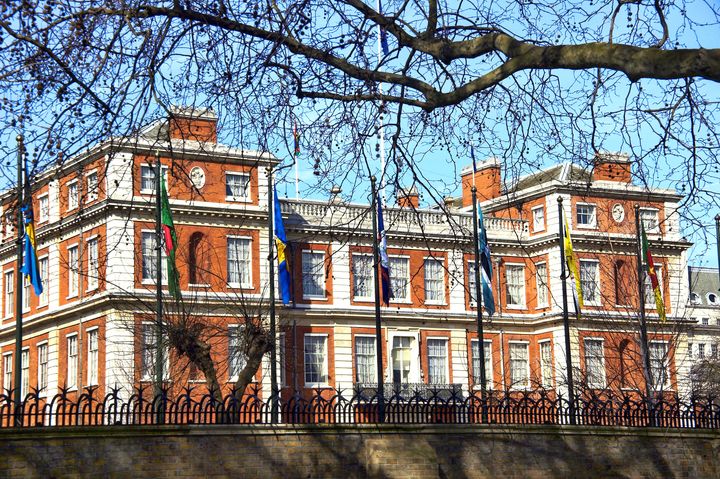British taxpayers have picked up a £2.4m bill for the renovation of Prince Harry and Meghan Markle’s new home.
Frogmore Cottage, which was previously five separate residences, has been turned into a single home for the newlywed couple.
“The works started on-site in November 2018 and were substantially completed by the end of March 2019,” the latest Sovereign Grant accounts said.
Anti-monarchy campaign group Republic said it was calling for a parliamentary inquiry into the spending.

Republic claimed the £2.4m tab could have paid for a mental health hub being built to support veteran Royal Marines in Lympstone, Devon.
Yet the sum was less than that spent on the refurbishment of Prince William and Kate Middleton’s home, Apartment 1A at Kensington Palace, west London, in 2013.
Extensive renovations there cost taxpayers £3.4m, in part, it was said, due to the need to remove asbestos and protect the historic building.
This is what they splashed the cash on:
- Creating one large property by merging five small ones
- Replacing defective ceiling beams and floor joists
- Outdated and inefficient heating systems updated
- Substantial new electrical wiring including own electrical substation
- New gas and water mains installed
- Luxury kitchen – including ‘floating’ floor in order to protect an old floor
- Luxury bathroom
- Extra bedrooms to accommodate guests, such as Meghan’s mother, Doria Ragland
- Fireplaces, floors and staircases replaced
- According to The Sun, Meghan chose eco-friendly, toxin-free and vegan paint for the redecoration, reportedly overseen by designer Vicky Charles, who was responsible for the interiors of Soho Farmhouse in Oxfordshire
- Exterior still to be repainted
Meanwhile, the latest accounts show Harry’s father, the Prince of Wales, was landed with a £5m bill in the year Harry and Meghan married and as the Duchess of Cambridge officially joined the royal family.
Charles pays for the public duties of the Duke and Duchess of Cambridge, Harry and Meghan, and some of their private costs, out of his multimillion pound Duchy of Cornwall income.
Royal accounts showed that the prince’s bill for the Sussexes’ and the Cambridges’ activities, plus other expenditure including Charles’s capital expenditure and transfer to reserves, was £5.05m in 2018-2019, up 1.8% or £89,000 from £4.96m in 2017-2018.
Over two years, the figure has risen more than £1.5m from £3.5m in 2016-2017.

In the year Harry and Meghan married, Charles’s non-official expenditure increased by £155,000, up 5.2% to £3.16m.
In a statement Republic said: “The dishonest spin about what this costs each taxpayer has to stop. We now need a full inquiry into this blatant misuse of public money.
“If even one school or hospital is facing cuts we cannot justify spending a penny on the royals. Yet with all public services under intense financial pressure we throw £2.4m at a new house for Harry. This is corruption being hidden in plain sight.”
Clarence House’s annual report provides no detailed breakdown of the funding for the activities of the Sussexes and the Cambridges, with royal sources saying the details were private.
The prince contributed to the Sussexes’ wedding and hosted Harry and Meghan’s evening wedding reception at Frogmore House, where the newlyweds enjoyed a spectacular firework display and partied until 3am with celebrity guests.
A royal source said: “Their expenditure is met by help from their father or things that they would pay for themselves from their private expenditure.”

A video released as part of the yearly review featured footage of Meghan walking down the aisle at St George’s Chapel and being met by a beaming Harry.
The source added that having the Cambridges and Sussexes among the working royals supporting the Queen was “a great opportunity for the whole family” .
They added: “I wouldn’t say it was placing additional financial burdens.
“Everything is well within budget and works incredibly harmoniously.”
As heir to the throne, Charles is entitled to the surplus generated by the Duchy of Cornwall’s vast portfolio of lands, buildings and financial investments – which includes the Oval cricket ground and 67,000 acres of Dartmoor.

The prince’s annual private income from the hereditary estate fell slightly by £103,000 to £21.63 million in the year 2018/2019.
The private landed estate was created in 1337 by Edward III to support his son and heir Prince Edward, known as the Black Prince, and all his subsequent heirs.
Official costs of the Prince of Wales’s London office and official residence Clarence House jumped by 252%, rising £478,000 from £190,000 to £668,000.
The bill, met by taxpayers through the Sovereign Grant, covered work on the roof, the portico and the perimeter wall.
A royal source said: “The point is that there is this great building which is an old building and a venerable building and from time to time it needs a bit of maintenance, so we’ve had to do works this year on the roof, the portico and some work to shore up the perimeter wall.”
Charles’s tax bill decreased by £152,000 to £4.7 million.
The cost of the prince and the Duchess of Cornwall’s official travel by air and rail rose by almost a third (31%) – jumping from £1.01 million to £1.33 million.
The prince’s taxpayer-funded Sovereign Grant income was up 66%, to £1.99 million, to cover the increased cost of travel and the Clarence House building works.
The annual review covers the period from April 1 2018 to March 31 2019.

